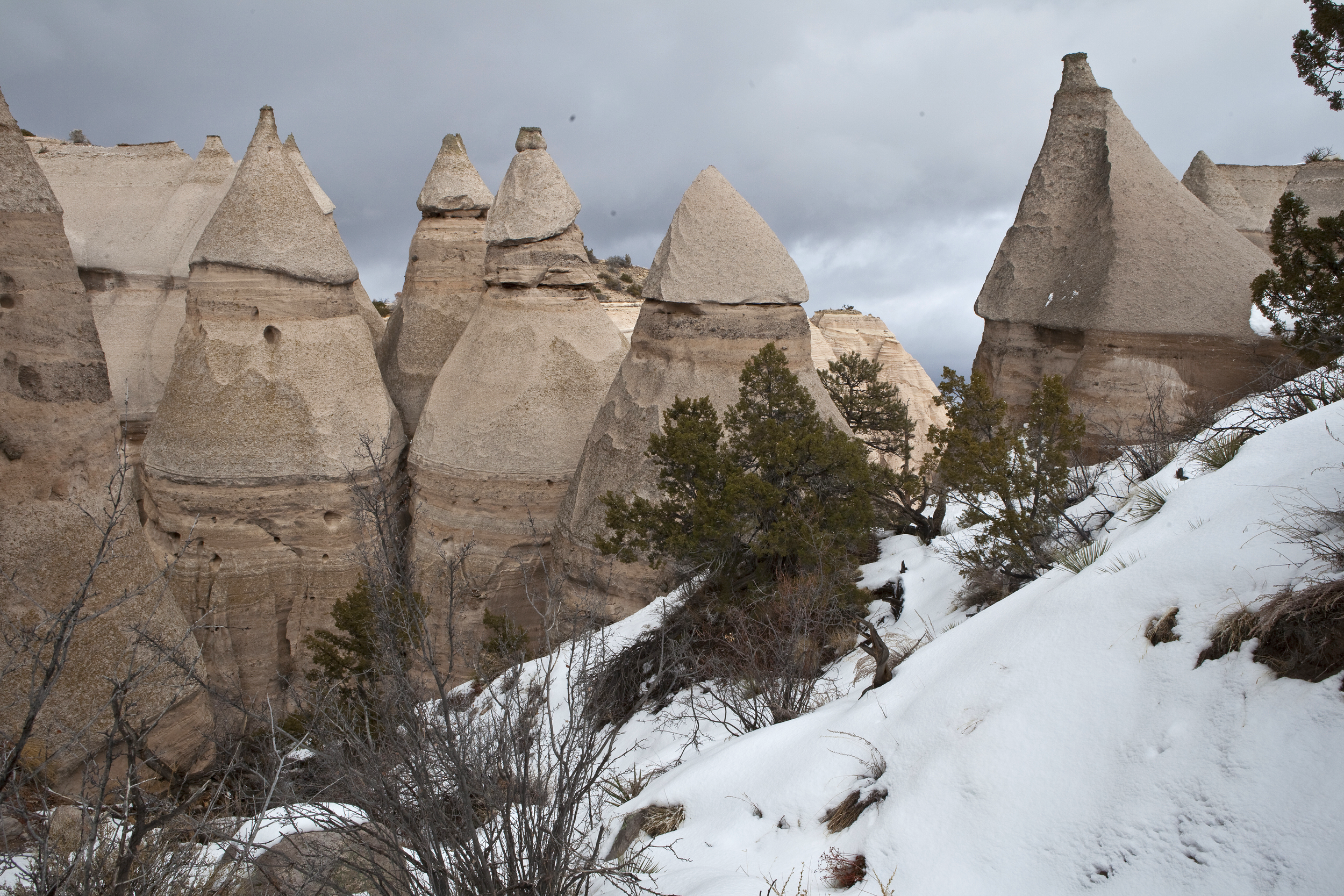How Do You Hoodoo?
/New Mexico is called the Land of Enchantment for a reason: its landscape takes stunning new forms at every turn, from rocky mountain peaks to deep-cut gorges, flat-topped mesas to rolling sand dunes. Then there are the hoodoos, geological features so seemingly magical that elsewhere they’re known as goblins or fairy chimneys.
Hoodoos are naturally-occurring stone spires that dot dry basins like enormous mushrooms. Unlike fruiting fungi, though, they didn’t sprout upward from the ground—rather, they held their own while the rock around them was weathered down by millennia of water and wind. How old is a hoodoo? The answer depends on whether you’re taking the age of the rock or the determining when it was winnowed into its current conical shape.
In the case of New Mexico’s own Kasha-Katuwe Tent Rocks National Monument, volcanic activity set the stage for hoodoo formation some six to seven million years ago. At that time nearly two dozen volcanoes in the Jemez Mountains erupted repeatedly, spewing ash and pumice that piled up a thousand feet high. Heat, pressure, and time have long since hardened these layers into the Peralta Tuff, a bed of porous rock reaching up to 6,760 feet above sea level.
Over the years, rainfall found weak spots in the tuff’s exposed surface, puddling in cracks and further splitting them with every freeze and thaw. Slivers widened into channels for seasonal streams and deepened into slot canyons; winds swept up grains of stone, polishing the remaining rock in the process. These days the area’s exposed cliffs and canyon walls reveal hardened sediment striped with warm orange (ancient compressed soil) and silvery white (6-million-year-old pyroclastic fall).
Worn-down expanses of rock are one things, but how were these free-standing hoodoos left behind? Some of them reach ninety feet tall in defiance of centuries of wind and rain.
They’re a result of the relative strength of different rock layers. Denser stone resisted the carving action of running water, while soft spots gradually disintegrated and washed away around them. The result: sturdy upper boulders act as umbrellas that shield underlying layers from precipitation. Look closely and you’ll see that most cones have distinct capstones. They may seem to perch on their peaks like an afterthought, but in reality they’re the hoodoos’ creator and guardian. If a hoodoo loses its capstone, the entire spire beneath it will weather away fairly quickly.
The Jemez Mountains may have cooled it with the volcanic eruptions, but the hoodoos of Kasha-Katuwe are still evolving, both as mountainsides erode away to create new ones and as their own caps gradually abandon them and allow them to disappear. Who knows how the region will look in another seven million years? For now, at least, it’s pretty enchanting indeed.
This post was brought to you by the Bureau of Land Management, Professor Marjorie Chan of the University of Utah Department of Geology & Geophysics, and a scenic tour of the Kasha-Katuwe Tent Rocks National Park.




